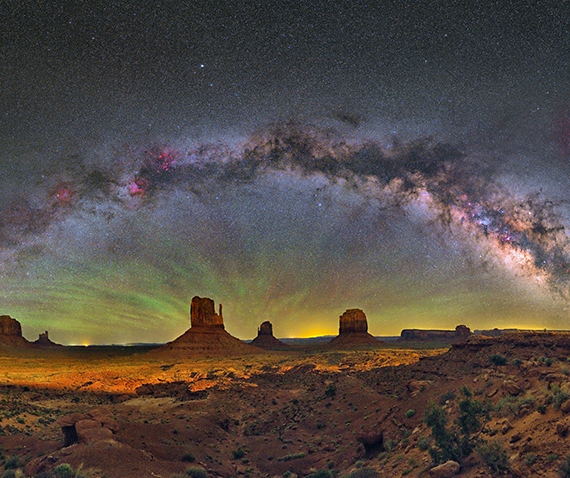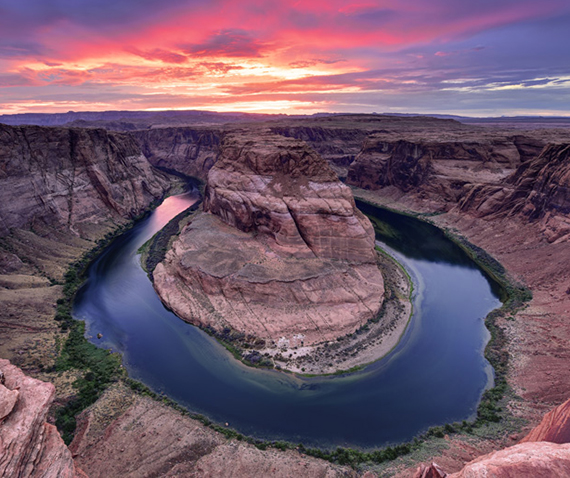Monument Valley is a region of the Colorado Plateau characterized by a cluster of vast sandstone buttes, the largest reaching 1,000 ft (300 m) above the valley floor.
It is located on the Arizona–Utah border near the Four Corners area.
The valley lies within the territory of the Navajo Nation Reservation and is accessible from U.S. Highway 163.
Monument Valley has been featured in many forms of media since the 1930s. Director John Ford used the location for a number of his best-known films and thus,
in the words of critic Keith Phipps, "its five square miles (13 square kilometers) have defined what decades of moviegoers think of when they imagine the American West.
Monument Valley is officially a large area that includes much of the area surrounding Monument Valley Navajo Tribal Park, a Navajo Nation equivalent to a national park.


Horseshoe Bend is a horseshoe-shaped incised meander of the Colorado River located near the town of Page, Arizona.
Horseshoe Bend is located 5 miles (8.0 km) downstream from the Glen Canyon Dam and Lake Powell within Glen Canyon National Recreation Area, about 4 miles southwest of Page.
It is accessible via hiking a 1.5-mile round trip from U.S. Route 89. Horseshoe Bend can be viewed from the steep cliff above.
The overlook is 4,200 feet (1,300 m) above sea level, and the Colorado River is at 3,200 feet (980 m) above sea level, making it a 1,000-foot (300 m) drop.
The rock walls of Horseshoe Bend contain hematite, platinum, garnet, and other minerals.
By 2018 references to the location on social media had caused the number of visitors to increase significantly.